
Do you have a question about the Panasonic Viera TX-26LXD600A and is the answer not in the manual?
| Screen Size | 26 inches |
|---|---|
| Display Technology | LCD |
| Resolution | 1366 x 768 |
| Aspect Ratio | 16:9 |
| Brightness | 500 cd/m² |
| HDMI Ports | 2 |
| Component Video Inputs | 1 |
| Response Time | 8 ms |
| Digital Tuner | Yes |
| Analog Tuner | Yes |
| Viewing Angle | 178 degrees |
Instructions for safely connecting and handling the power cord and plug.
Warning against opening the TV casing due to electrical shock hazards.
Warning against inserting objects into vents to prevent fire or shock.
Precautions against heat damage and fire hazards from heat sources.
Warning to prevent liquid damage, fire, or shock hazards.
Caution against instability and potential injury from unsecured placement.
Advice to use authorized stands/mounts for safety and stability.
Guidance on avoiding electromagnetic interference from other electronic devices.
Instructions on tilting the screen for optimal viewing.
Warning about blocking ventilation to prevent overheating, fire, or shock.
Procedures for cleaning the TV's screen surface carefully.
Guidelines for cleaning the TV's exterior cabinet.
Recommendation to periodically clean the mains plug with a dry cloth.
List of items included with the TV for basic operation.
Step-by-step guide on how to insert batteries into the remote control.
Information on additional items available for purchase, like wall brackets.
Identification and function of buttons on the remote control transmitter.
Description of buttons and indicators located on the TV's front panel.
Instructions on how to remove and attach the cable cover on the TV's rear.
Procedure to select the geographical region for accurate channel tuning.
Steps to initiate the automatic search and storage of TV channels.
Guide for entering a personal identification number for security or customization.
Instructions on how to power on the television set.
Guide on choosing between digital (DVB) and analogue TV reception modes.
Methods for choosing a TV channel or service, including using the information banner.
Description of additional features like picture freezing, subtitles, and aspect ratio adjustment.
Steps to enable DVB mode to access the TV Guide electronic program listings.
How to navigate and view program information and schedules.
Options for viewing program details, selecting services, and navigating through listings.
Instructions for choosing the correct input source for external devices.
Steps for connecting and controlling devices like VCRs, DVD players, and amplifiers.
How to access the teletext service for news, weather, and subtitles.
Guide to using TOP mode, List mode, and storing favourite pages.
Steps to access and navigate through the TV's main menu options.
Guide to customizing viewing and audio parameters via the menu.
Procedure to switch the TV to Digital Video Broadcasting mode for advanced settings.
How to create, edit, and manage lists of preferred digital TV channels.
Adjusting audio preferences, SPDIF output, and updating TV software.
Steps to set the TV to DVB mode for channel management.
Process for automatically scanning and storing available digital TV channels.
Procedures for manual channel tuning and managing new service notifications.
Steps to set the TV to Analogue mode for channel management.
Operations for adding, deleting, moving, locking, and skipping analogue channels.
Guides for automatic channel scanning and manual adjustment of analogue reception.
Instructions for setting a personal ID and PIN for security and personalization.
How to update or change the previously stored personal information.
Steps to connect a PC and select the appropriate input source for display.
Adjustments for PC display settings like resolution, H-pos, and V-pos.
How to insert an SD card and choose between video or photo viewing modes.
Procedures for selecting and watching videos or viewing photos from the SD card.
Details on controlling playback, aspect ratio, and viewing different media types.
Guide on inserting the SD card to enable program recording.
Instructions for setting the duration and quality mode for recordings.
How to check remaining storage space and format the SD card.
How to enable and configure the "Control with HDMI" function for interconnected devices.
Steps for setting up easy playback and home theatre configurations using HDMI.
Diagrams and explanations for connecting HDMI, S-Video, and audio cables.
Guidance on connecting PCs, satellite receivers, DVD recorders, and headphones.
A table showing recommended connections for various types of equipment.
Restoring factory settings and adjusting image aspect ratios for optimal viewing.
Procedures for updating TV software and understanding content rating categories.
Information on how to display multiple video sources simultaneously on the screen.
Specifications and guidance for connecting equipment via HDMI and PC interfaces.
How to select audio modes for analogue broadcasts with stereo or bilingual sound.
Table detailing compatible input signals for Component, HDMI, and PC connections.
Details on file formats, resolutions, and card compatibility for media playback.
Explanation of the expected folder structure and file naming conventions for SD cards.
Solutions for common screen problems like noise, chaotic images, or no display.
Guidance on resolving problems with DTV aerial connection and channel reception.
Troubleshooting for unusual pictures or sound when using HDMI connections.
Solutions for slow startup, channel selection, remote control, and standby mode issues.
Explanations for on-screen messages related to SD cards and safe handling precautions.
List of trademarks and copyrights acknowledged in the manual.
Technical details on power consumption, screen size, and audio output.
Information on input/output terminals, signal frequencies, and dimensions.
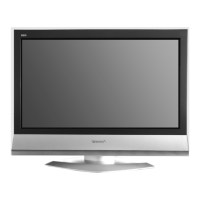
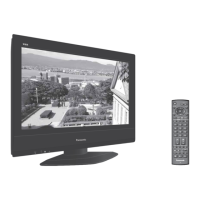
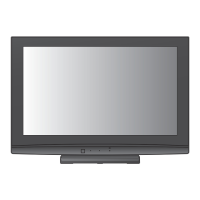



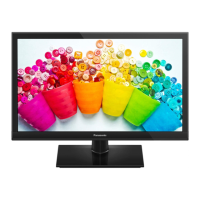
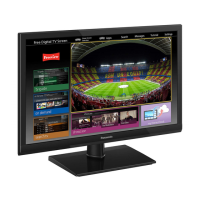

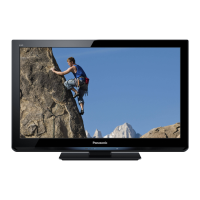


